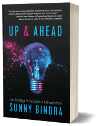The new government’s big challenge: connecting the dots
Kenya’s new government is off to a flying start. There’s no shortage of activity as ministers roll up their sleeves and try to outdo one another in their quest to impress Kenyans. Civil servants and technocrats are having to work all hours to build the iceberg of details that must be constructed beneath the tip of popular proclamations. Nothing wrong with that: hard work is a virtue long forgotten in government, and one that it would do well to reclaim. And if our leaders are a little over-zealous in their initiatives, let them be so; their predecessors were asleep at the wheel for so long that a little over-compensation will not hurt.
Our new leaders are not oblivious to the opportunities that face us, nor to the forces that threaten us. On the contrary, they are engaged in many, many worthwhile initiatives in response. Progress is being made on several fronts simultaneously: corruption is under severe attack; donor relations are being mended at warp-speed; forest denudation is being arrested; free universal primary education is a reality again. These are all excellent things, and for a government that’s been in situ for just a few weeks, a remarkable achievement.
But in the midst of all this bustle, a danger lurks. A failure to act may not be the problem; if we are not careful, however, a failure to coordinate may be. A clear sense of strategic direction for Kenya Ltd is the prerequisite to success. A strategic plan is the umbrella under which the seeds of worthwhile initiatives must be sheltered and watered. The cabinet must ‘connect the dots’: harmonise and rationalise all the government’s initiatives. Kenyans must be shown the constellation, as well the stars.
To do this, we must agree on two distinct things: what we must do, and how we must do it. Choice is very much the operative word here. Trade-offs must be made. The country that tries to be all things to all interest groups will always fail. Sacrifices are an essential feature of strategy: in the corporate sector, companies choose their markets and their competitive weaponry carefully and intelligently. So must government.
Let’s start with the ‘what’ part of the equation. First and foremost, we must have a sense of vision. We must define where we want to be, the values we want to hold dear, the tangible things we want to achieve. We must allow ourselves the freedom to dream. Dreaming as a pastime is something that was beaten out of Kenyans over the past two decades. After years and years of failed promises, of seeing only a steady decline in living standards, the people learned to focus on the ‘here-and-now’, on how the hand would get the food to the mouth. Dreaming became an expensive delusion.
Now, dreaming is back! We all have views about the ‘Kenya we want’, and we want to express them. Fortunately, vision setting is being done systematically, and at many levels. East Africa’s leading CEOs got together late last year and defined their view of the future: a fully digital economy, underpinned by strong governance, served by sturdy infrastructure. In similar vein, a group of 50 bright young Kenyans have been debating their version of the ‘Kenya we want’ under the auspices of the Institute of Economic Affairs. Whilst the youngsters are also emphasing a ‘competitive, dynamic and robust’ economy, they (interestingly) give a great deal of emphasis to pluralism and diversity, to patriotism and national dignity, to caring and compassion.
These are laudable initiatives, all aimed at generating one thing: our common dream of a better Kenya. Here, the government can play a specific ‘connecting-the-dots’ role: bringing these diverse strands together and codifying the vision into something we can all believe in. Dreams are good; precise targets are even better. Specific goals and clear objectives will be the key: we must stop trying to be better at everything immediately, and focus on doing a few things extremely well.
The second part of the strategic planning rope trick is the ‘how’. A key decision here concerns money. What is the ‘right’ level of expenditure needed to meet the agreed targets? How will the funds be raised? What financing options exist? In addition, governments need to form alliances. What role should development partners play? How important is it to form alliances with regional partners?
When the planning is done, the action must ensue. It is a brutal fact that in the corporate sector, 9 out of 10 companies fail to implement their agreed strategic plans. Why? Because allocating time and resources is never straightforward; explaining strategy to a wider audience is no easy thing. Implementation needs organisations to be in place. It requires projects to be set up. It needs teams of qualified people to come together. It means designing work processes. It requires monitoring of progress. It demands discipline, and a fixation on results. Fortunately, the new government has many personalities who are already exhibiting what in management-speak is known as ‘a bias for action’. Ministers seem to need no prompting to get down to it; all we need to know is that they’re working from the same blueprint.
That, then, is the nuts-and-bolts of a strategy. Choose your first targets wisely, and make sure you hit them. But make sure you understand the longer-term initiatives as well, and keep them simmering away. Patching up the most-used urban roads, for instance, is a ‘quick win’: easy to do, and provides high visibility. Designing a national network of roads based on future patterns of economic activity, and thinking about innovative funding and charging options, is a little more complicated and will take more forethought and technical expertise. Yet both must be done, simultaneously; one with urgency, the other with deliberation.
Simply having a strategy is very important; having a very good one is not as important as you might think. More important than quality, in strategic terms, is consensus. We must have a plan we all agree on. Most strategies, in corporations as well as countries, are undone by a lack of unity. Typically, a few strong-minded, forceful individuals come up with what seems to be the winning formula. Other less vigorous players acquiesce, with silent reservations. At the first sign of trouble, the reservations manifest themselves as a stubborn refusal to co-operate. The plan is derailed.
Consensus is no easy thing to achieve, and works at two levels: firstly, the entire cabinet must believe in the plan, and sell it to the country with great passion; secondly, the people must buy it, and sing its praises. Such a plan will deliver. But to get there, a great deal of negotiation and dialogue will be necessary. This will be time well spent, and the government should not shy away from it; there’s no such thing as over-communication of a strategy. As General Eisenhower once said: “Plans are nothing, planning is everything.”
Given all of this, the announcement last week by the Minister for Planning and Economic Development was very welcome. A draft strategy for economic recovery is being debated even as you read this, with invited experts in Mombasa. This will produce a ‘strategy roadmap’ for Kenyans: where we’re going and why, what to expect on the journey, how to keep to the road, how to know when we’ve arrived. This roadmap will be shared with a wider group of stakeholders in March, at a national economic summit. After that, the strategy for Kenya Ltd will become public property, and will be our guide during the forthcoming adventures of the next five years.
This is excellent news, and reassures us that behind all the action, rational thinking about ‘what’ and ‘how’ is proceeding apace. A strategic plan is in formation. As it unfolds, all Kenyans must stand up and participate in giving it its final gloss. Its success or failure will affect all our futures. We are all stakeholders now.

Buy Sunny Bindra's book
UP & AHEAD
here »
Popular Posts
- Who owns the time in your life?September 29, 2024
- Why 60 per cent is often an excellent result in lifeSeptember 22, 2024
- Customer complaints are as old as humanityOctober 6, 2024
- Why the lazy may be your best innovatorsOctober 13, 2024
- The struggle for meaning is both peculiar and personalOctober 20, 2024











